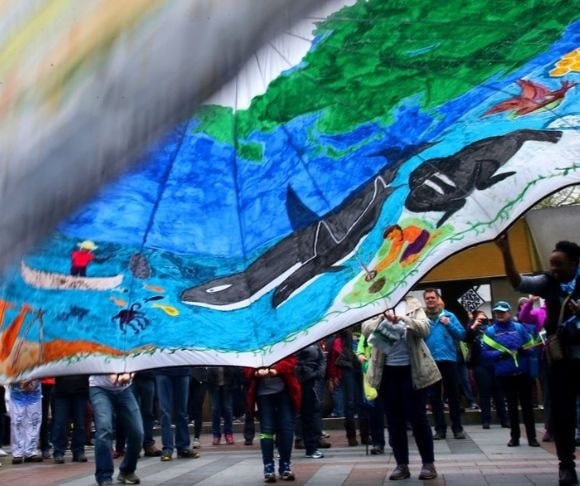One of the most frequently cited numbers used to refute climate skeptics is the so-called 97% consensus among climate scientists. What you are rarely told, however, is that most climate skeptics belong to this consensus and that there are far fewer alarmists than you think.
The False Story
 If you are like most people, you think that 97% of climate scientists believe that humans are causing catastrophic climate change, while 3% think it’s no big deal. That’s false. Those 3% of climate scientists are either convinced that there has been no global warming at all or that humans have almost no effect. The other 97% believe that a significant portion of the observed warming in the last century is caused by humans.
If you are like most people, you think that 97% of climate scientists believe that humans are causing catastrophic climate change, while 3% think it’s no big deal. That’s false. Those 3% of climate scientists are either convinced that there has been no global warming at all or that humans have almost no effect. The other 97% believe that a significant portion of the observed warming in the last century is caused by humans.
What’s the difference? The missing piece of information is that there are climate skeptics who not only accept that the earth has warmed but also believe that 100% of the warming is manmade.
Wait. What?
If you are confused, you are well on your way to understanding why the 97% consensus number is so grossly misleading. If some climate skeptics believe that all global warming is caused by CO2, what do the climate alarmists believe? The answer: They think that humans have caused between 200% and 300% of the observed warming.
At first glance, that seems impossible, but the alarmists explain it by saying that the coal power plants and cars that have emitted CO2 also have released particles and aerosols into the atmosphere that by extraordinary coincidence cancels most of the warming. They believe that the remaining missing warming is hiding somewhere deep in the ocean, not unlike the Loch Ness monster.
Therefore, they claim, there is built-in warming that has not yet manifested, but which will come back with a vengeance in the coming decades.
The Charney Consensus
In 1979, renowned meteorologist Dr. Jule Gregory Charney chaired an “ad hoc study group on carbon dioxide and climate” for the National Research Council. The Charney report is highly influential and became the bedrock of the modern climate consensus. The so-called Charney sensitivity is the cornerstone of all Intergovernmental Panel on Climate Change (IPCC) climate reports. This states that if the CO2 level doubles, the earth will, on average, warm between +1.5°C and +4.5°C.
Whenever you hear about the climate consensus, this sensitivity is what they agree on. The so-called climate skeptics are at the low end of this range, whereas the alarmists are in the high range. Roughly 3% of scientists believe it’s lower or higher.
The Consensus Skeptics

(Photo by Karen Ducey/Getty Images)
What do the consensus climate skeptics believe? What do the numbers mean? Since the industrial revolution, the CO2 level has roughly half-doubled. The Charney consensus, therefore, dictates warming between 0.75°C and 2.25°C (1.4°F to 4°F). The observed warming since 1850 is around 0.8°C.
Observations better match the skeptics than the alarmists. The multi-trillion-dollar question is: What will happen in the future if the consensus skeptics are right? If we are to believe the alarmists, the CO2-level can half-double by 2100. In that grossly exaggerated worst case, the earth will warm another 0.75°C, according to the skeptics. Such mild warming is innocuous and beneficial.
A more realistic scenario is that CO2 will never more than quarter-double, which translates into the barely measurable 0.4°C global warming. In either case, if the consensus skeptics are right, climate change is a nothing burger.
Trillions at Stake
The alarmists have trillions of dollars and much prestige to lose if the skeptics are correct. No wonder they are trying their best to convince the public that the consensus skeptics are not part of mainstream science.
~
Read more from Liberty Nation.




